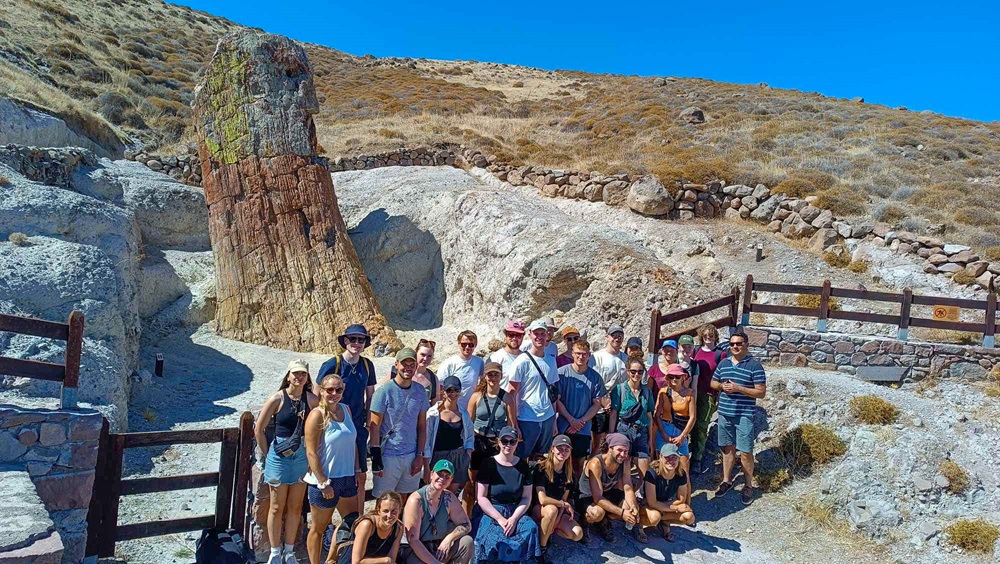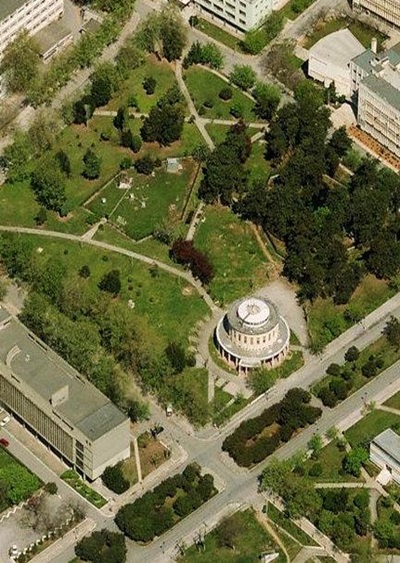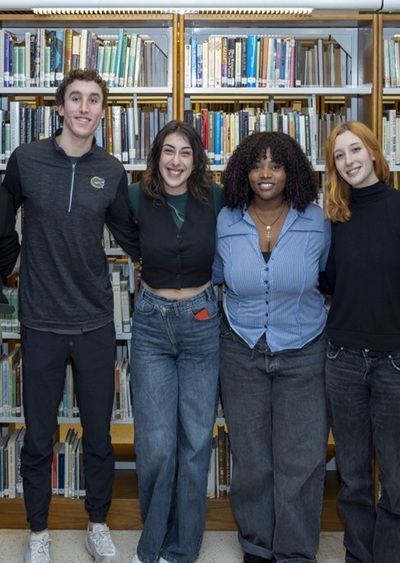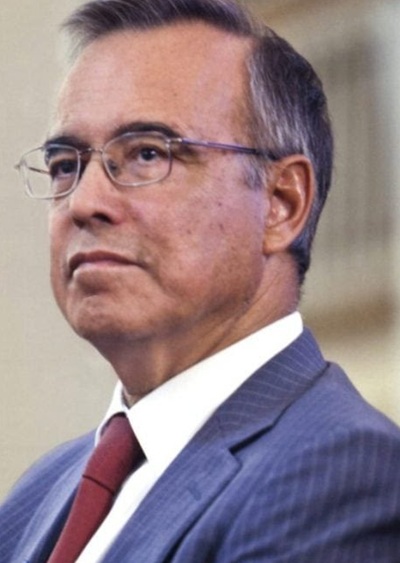
Postgraduate students of the University of Kiel from Germany are in Lesvos for a field exercise within the framework of the Postgraduate Studies Programme of the Department of Geography who were accompanied by the responsible Professor Nassos Vafidis..
In particular, the students visited the Petrified Forest, the wetlands of Kalloni Bay and the Natural History Museum of the Petrified Forest of Lesvos
The students were accompanied and informed about the Geopark of Lesvos and the places of interest by Dr. Elias Valiakos, Head of the Research Department of the Museum.
The students visited the wetland of Kalloni where they had the opportunity to learn about the geological history of the area, the biodiversity and the activities of the Kalloni Environmental Information Centre. At the same time, they participated in a bird watching activity where they met birds unique to the Aegean region that choose the wetland of Kalloni as their habitat.
The students then visited the impressive fossil sites along the new road axis of Kalloni-Sigri where they had the opportunity to learn about the extensive programme of excavation, maintenance and promotion of the fossils excavated during the opening of the road axis.
This was followed by a visit to the Petrified Forest Park where they learned about root systems and fossilized trunks in their natural habitat, while they were also informed about the excavation and maintenance procedures of the fossils. At the same time, they were informed about the impressive results of the Museum’s recent excavations on the island of Nisiopi and the rescue excavations carried out along the Kalloni – Sigri road.
At the Natural History Museum of the Petrified Forest of Lesvos, where they were informed about the latest excavations, the new types of fossils, the creation of the Petrified Forest of Lesvos, the paleogeographic evolution of the Aegean and the scientific data resulting from the study of the Petrified Forest. The students then came into contact with the findings of the Petrified Forest during their tour of the permanent exhibition areas of the Museum and their importance for the understanding of the geohistorical evolution of the Aegean.
They were also informed about the seismic activity in the Aegean and participated in the simulation of large earthquakes in the Museum’s seismic bank.
After the end of the field training, the students were impressed by the knowledge they gained in the Petrified Forest of Lesvos and the fossil preservation and protection work and described the area as a unique laboratory for the study of phenomena and geological history on a global level.







Leave A Comment